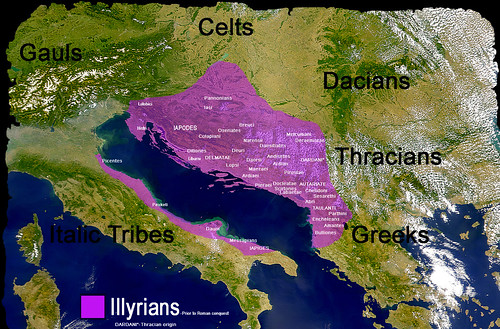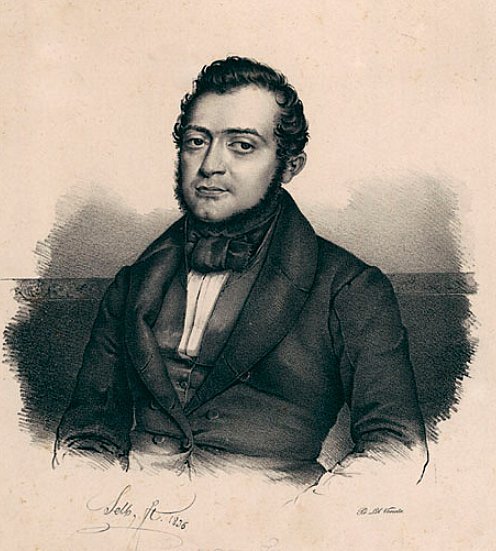Post by croatchessmaster on Feb 11, 2012 18:45:45 GMT -5
Croatian national revival. A revival performed by a group of young Croatian intellectuals during the first half of 19th century, around the years of 1835–1849.
This movement aimed to create a Croatian national establishment in Austria-Hungary through linguistic and ethnic unity among South Slavs.

The Illyrian name was revived officially during the Napoleonic Wars, when the French gave the name Illyrian Provinces to the Adriatic possessions acquired from the Austrian Empire in 1809. After 1813, when the territories were again included into the Austrian Empire, the Austrians kept the denomination and formed the Kingdom of Illyria.
Drawing its name from a Roman region in the Balkans and the Illyrian Provinces of 1809 - 13, the Illyrian Movement derived from a political party founded in 1841 which argued for the unification of all the ‘South Slavs’. The Illyrian’s believed these people shared a political, cultural and ethnic heritage which would form a working state in an area divided largely between the Ottoman, Austrian and Italian empires. The Illyrian Movement was created by intellectuals, and gave an intellectual justification for uniting Serbs with other South Slavs, so while there was an emphasis on escaping the neighbouring empires, in practice they were most concerned with forming a unified language and culture. The work of the movement is one reason why Serb and Croat are such similar languages.
The Illyrian movement is often related to Yugoslavism. Nationalism or patriotism centred upon the Yugoslav ("South Slav") peoples within the Yugoslav populated territories of Southeastern Europe.
Fojnicki grbovnik
Symbol of the Illyrian Movement.

The only South Slav territories not represented in the arms are Montenegro and Slovenia. The divisions are labelled with letters as follows: (A) Macedonia, (B) Slavonia, (C) Bosnia (the star-and-crescent of "Illyria" is present in an inescutcheon in the Bosnian coat of arms), (E) Dalmatia, (F) Serbia, (G) Croatia, (H) Rascia, (I) "Primordia", with an added imperial double-headed eagle (labelled J).
Ljudevit Gaj, a key figure of the Illyrian movement declared Croats and Serbs to be the two major subgroups of the South Slav or "Illyrian" nationality, which also included Slovenes, and South Slavic inhabitants of Bosnia and Herzegovina, Bulgaria, and Montenegro.

During the Revolutions of 1848, the Illyrian movement became a strong political force in the Hapsburg Austrian Empire, and advocated cooperation between Croats and Serbs to oppose Hungarian rule of its South Slavic populated territories.
This movement aimed to create a Croatian national establishment in Austria-Hungary through linguistic and ethnic unity among South Slavs.

The Illyrian name was revived officially during the Napoleonic Wars, when the French gave the name Illyrian Provinces to the Adriatic possessions acquired from the Austrian Empire in 1809. After 1813, when the territories were again included into the Austrian Empire, the Austrians kept the denomination and formed the Kingdom of Illyria.
Drawing its name from a Roman region in the Balkans and the Illyrian Provinces of 1809 - 13, the Illyrian Movement derived from a political party founded in 1841 which argued for the unification of all the ‘South Slavs’. The Illyrian’s believed these people shared a political, cultural and ethnic heritage which would form a working state in an area divided largely between the Ottoman, Austrian and Italian empires. The Illyrian Movement was created by intellectuals, and gave an intellectual justification for uniting Serbs with other South Slavs, so while there was an emphasis on escaping the neighbouring empires, in practice they were most concerned with forming a unified language and culture. The work of the movement is one reason why Serb and Croat are such similar languages.
The Illyrian movement is often related to Yugoslavism. Nationalism or patriotism centred upon the Yugoslav ("South Slav") peoples within the Yugoslav populated territories of Southeastern Europe.
Fojnicki grbovnik
Symbol of the Illyrian Movement.

The only South Slav territories not represented in the arms are Montenegro and Slovenia. The divisions are labelled with letters as follows: (A) Macedonia, (B) Slavonia, (C) Bosnia (the star-and-crescent of "Illyria" is present in an inescutcheon in the Bosnian coat of arms), (E) Dalmatia, (F) Serbia, (G) Croatia, (H) Rascia, (I) "Primordia", with an added imperial double-headed eagle (labelled J).
Ljudevit Gaj, a key figure of the Illyrian movement declared Croats and Serbs to be the two major subgroups of the South Slav or "Illyrian" nationality, which also included Slovenes, and South Slavic inhabitants of Bosnia and Herzegovina, Bulgaria, and Montenegro.

During the Revolutions of 1848, the Illyrian movement became a strong political force in the Hapsburg Austrian Empire, and advocated cooperation between Croats and Serbs to oppose Hungarian rule of its South Slavic populated territories.










